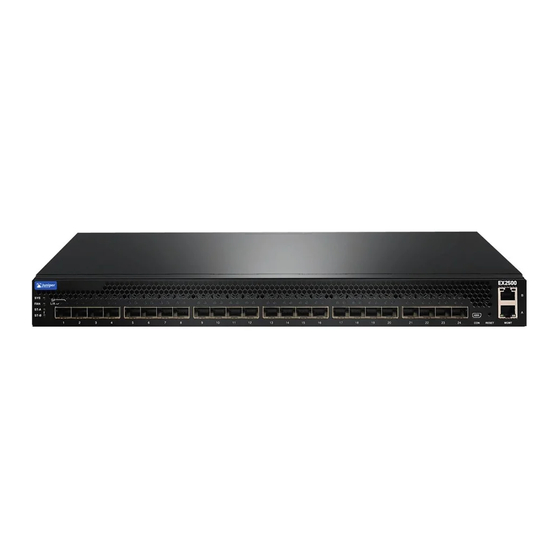
Juniper EX2500 Manuals
Manuals and User Guides for Juniper EX2500. We have 3 Juniper EX2500 manuals available for free PDF download: Configuration Manual, Hardware Manual, Quick Start
Juniper EX2500 Configuration Manual (102 pages)
Juniper Networks Switch User Manual
Brand: Juniper
|
Category: Network Router
|
Size: 1 MB
Table of Contents
Advertisement
Advertisement
Advertisement


